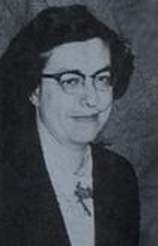
The Crow, whose autonym is Apsáalooke, also spelled Absaroka, are Native Americans living primarily in southern Montana. Today, the Crow people have a federally recognized tribe, the Crow Tribe of Montana, with an Indian reservation located in the south-central part of the state.

The Lakota are a Native American people. Also known as the Teton Sioux, they are one of the three prominent subcultures of the Sioux people, with the Eastern Dakota (Santee) and Western Dakota (Wičhíyena). Their current lands are in North and South Dakota. They speak Lakȟótiyapi—the Lakota language, the westernmost of three closely related languages that belong to the Siouan language family.

The Indian Territory and the Indian Territories are terms that generally described an evolving land area set aside by the United States government for the relocation of Native Americans who held original Indian title to their land as a sovereign independent state. The tribes ceded land they occupied in exchange for land grants in 1803. The concept of an Indian Territory was an outcome of the U.S. federal government's 18th- and 19th-century policy of Indian removal. After the American Civil War (1861–1865), the policy of the U.S. government was one of assimilation.

The National Museum of the American Indian is a museum in the United States devoted to the culture of the indigenous peoples of the Americas. It is part of the Smithsonian Institution group of museums and research centers.

Suzan Shown Harjo is an advocate for Native American rights. She is a poet, writer, lecturer, curator, and policy advocate who has helped Native peoples recover more than one million acres (4,000 km²) of tribal lands. After co-producing the first American Indian news show in the nation for WBAI radio while living in New York City, and producing other shows and theater, in 1974 she moved to Washington, D.C., to work on national policy issues. She served as Congressional liaison for Indian affairs in the President Jimmy Carter administration and later as president of the National Council of American Indians.

The Northern Cheyenne Tribe of the Northern Cheyenne Indian Reservation is the federally recognized Northern Cheyenne tribe. Located in southeastern Montana, the reservation is approximately 690 square miles (1,800 km2) in size and home to approximately 6,000 Cheyenne people. The tribal and government headquarters are located in Lame Deer, also the home of the annual Northern Cheyenne pow wow.

Bacone College, formerly Bacone Indian University, is a private tribal college in Muskogee, Oklahoma. Founded in 1880 as the Indian University by missionary Almon C. Bacone, it was originally affiliated with the mission arm of what is now American Baptist Churches USA. Renamed as Bacone College in the early 20th century, it is the oldest continuously operated institution of higher education in Oklahoma. The liberal arts college has had strong historic ties to several tribal nations, including the Muscogee and Cherokee. The Bacone College Historic District has been on the National Register of Historic Places listings in Muskogee County, Oklahoma since 2014.

The National Congress of American Indians (NCAI) is an American Indian and Alaska Native rights organization. It was founded in 1944 to represent the tribes and resist federal government pressure for termination of tribal rights and assimilation of their people. These were in contradiction of their treaty rights and status as sovereign entities. The organization continues to be an association of federally recognized and state-recognized Indian tribes.

The Great Sioux War of 1876, also known as the Black Hills War, was a series of battles and negotiations that occurred in 1876 and 1877 in an alliance of Lakota Sioux and Northern Cheyenne against the United States. The cause of the war was the desire of the US government to obtain ownership of the Black Hills. Gold had been discovered in the Black Hills, settlers began to encroach onto Native American lands, and the Sioux and the Cheyenne refused to cede ownership. Traditionally, American military and historians place the Lakota at the center of the story, especially because of their numbers, but some Native Americans believe the Cheyenne were the primary target of the American campaign.
The Cheyenne and Arapaho Tribes are a united, federally recognized tribe of Southern Arapaho and Southern Cheyenne people in western Oklahoma.

Horace Poolaw (1906–1984) was a Kiowa photographer from Mountain View, Oklahoma.
Walter Richard West Sr., was a painter, sculptor, and educator. He led the Art Department at Bacone College from 1947 to 1970. He later taught at Haskell Institute for several years. West is an enrolled member of the Cheyenne and Arapaho Tribes.

Carl Sweezy (1881–1953) was a Southern Arapaho painter from Oklahoma. He painted individual portraits, but was best known for his portrayals of ceremonies and dances.
The Native American Rights Fund (NARF) is a non-profit organization, based in Boulder, Colorado, that uses existing laws and treaties to ensure that U.S. state governments and the U.S. federal government live up to their legal obligations. NARF also "provides legal representation and technical assistance to Indian tribes, organizations and individuals nationwide."
Della Cheryl Warrior is the first and only woman to date to serve as the chairperson and chief executive officer for the Otoe-Missouria Tribe. She later served at the president of the Institute of American Indian Arts, finding a permanent home for the institution as well as helping to raise over one hundred million dollars for the institution over a twelve-year period. Warrior was inducted into the Oklahoma Women's Hall of Fame in 2007.
Mary Kathryn Nagle is a playwright and an attorney specializing in tribal sovereignty of Native nations and peoples. She was born in Oklahoma City, OK, and is an enrolled citizen of the Cherokee Nation of Oklahoma. She previously served as the executive director of the Yale Indigenous Performing Arts Program (YIPAP) from 2015 to 2019.

Helen Peterson was a Cheyenne-Lakota activist and lobbyist. She was the first director of the Denver Commission on Human Relations. She was the second Native American woman to become director of the National Congress of American Indians at a time when the government wanted to discharge their treaty obligations to the tribes by eliminating their tribal governments through the Indian termination policy and forcing the tribe members to assimilate into the mainstream culture. She authored a resolution on Native American education, which was ratified at the second Inter-American Indian Conference, held in Cuzco, Peru. In 1986, Peterson was inducted into the Colorado Women's Hall of Fame and the following year, her papers were donated to the Smithsonian's National Anthropological Archives and they are now held at the National Museum of the American Indian.

Southern Plains Indian Museum is a Native American museum located in Anadarko, Oklahoma. It was opened in 1948 under a cooperative governing effort by the United States Department of the Interior and the Oklahoma state government. The museum features cultural and artistic works from Oklahoma tribal peoples of the Southern Plains region, including the Caddo, Chiricahua Apache, Comanche, Delaware Nation, Kiowa, Plains Apache, Southern Arapaho, Southern Cheyenne, and Wichita.

Juanita L. Learned was the first woman to chair the Cheyenne and Arapaho Tribes. She was Southern Arapaho and was known for her work to keep the Concho Indian School from closing, as well as actions to return the school building, and land and buildings of Fort Reno to her tribe.

Kevin Gover is currently the Under Secretary for Museums and Culture at the Smithsonian. He had served from 2007 until January 2021 as the director of the National Museum of the American Indian. A citizen of the Pawnee Nation of Oklahoma, he previously served as the Assistant Secretary of the Interior for Indian Affairs under President Bill Clinton.















